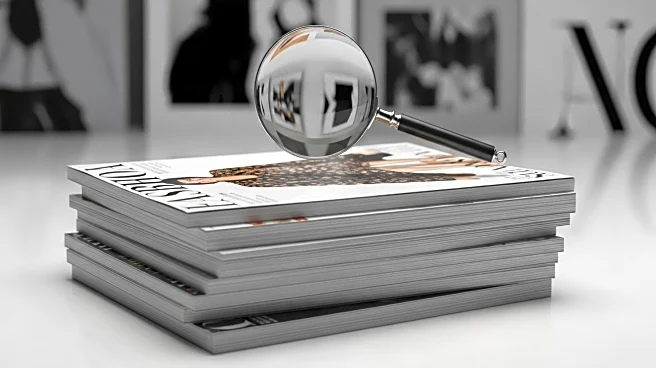What's Happening?
A new book titled 'Empire of the Elite: Inside Condé Nast, the Media Dynasty That Reshaped America' by Michael Grynbaum delves into the cultural and media influence of Condé Nast, a major player in the fashion and media industry. The book discusses the company's impact on style, art, and literature, highlighting its role as a cultural institution. Grynbaum's work also touches on the legacy of Anna Wintour, a prominent figure in fashion, and her influence on the industry. The book reveals insights into the internal culture at Condé Nast, characterized by a demanding work environment that has shaped the careers of many in the fashion world. Additionally, the book explores the challenges faced by creative directors at luxury brands as they adapt their visions in a rapidly changing market.
Why It's Important?
The book's exploration of Condé Nast's influence underscores the significant role media companies play in shaping cultural and fashion trends. As a major force in the industry, Condé Nast's practices and leadership styles have far-reaching implications for how fashion is consumed and perceived globally. The insights into the company's internal culture and the challenges faced by creative directors highlight the evolving nature of the fashion industry, where adaptability and innovation are crucial for success. This narrative is particularly relevant as the industry grapples with changes in consumer behavior and the rise of digital media, which continue to redefine traditional business models.
What's Next?
The book's revelations may prompt discussions within the fashion and media industries about the future of leadership and innovation. As creative directors at luxury brands navigate the balance between artistic vision and commercial success, there may be increased focus on how these roles evolve in response to market demands. Additionally, the insights into Condé Nast's internal culture could lead to broader conversations about workplace practices and the cultivation of talent in high-pressure environments.
Beyond the Headlines
The book also touches on the ethical and cultural dimensions of media influence, particularly how figures like Anna Wintour have shaped public perceptions of fashion and style. The portrayal of Condé Nast as a cultural institution raises questions about the responsibilities of media companies in promoting diversity and inclusivity within the industry. As the fashion world continues to evolve, these discussions may influence future policies and practices aimed at fostering a more equitable and representative industry.











